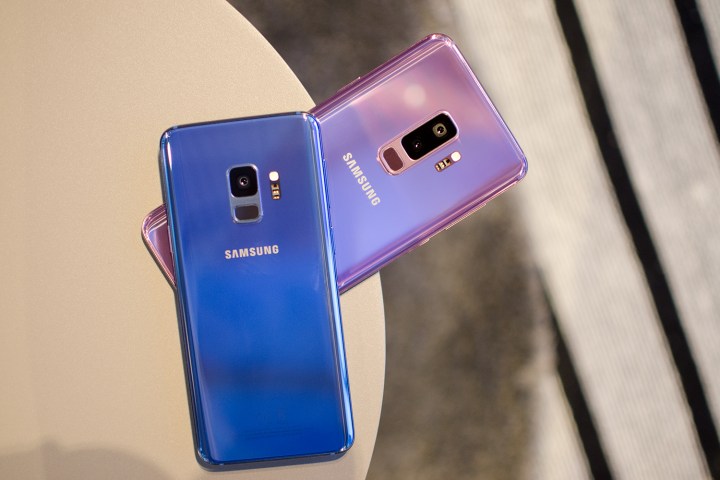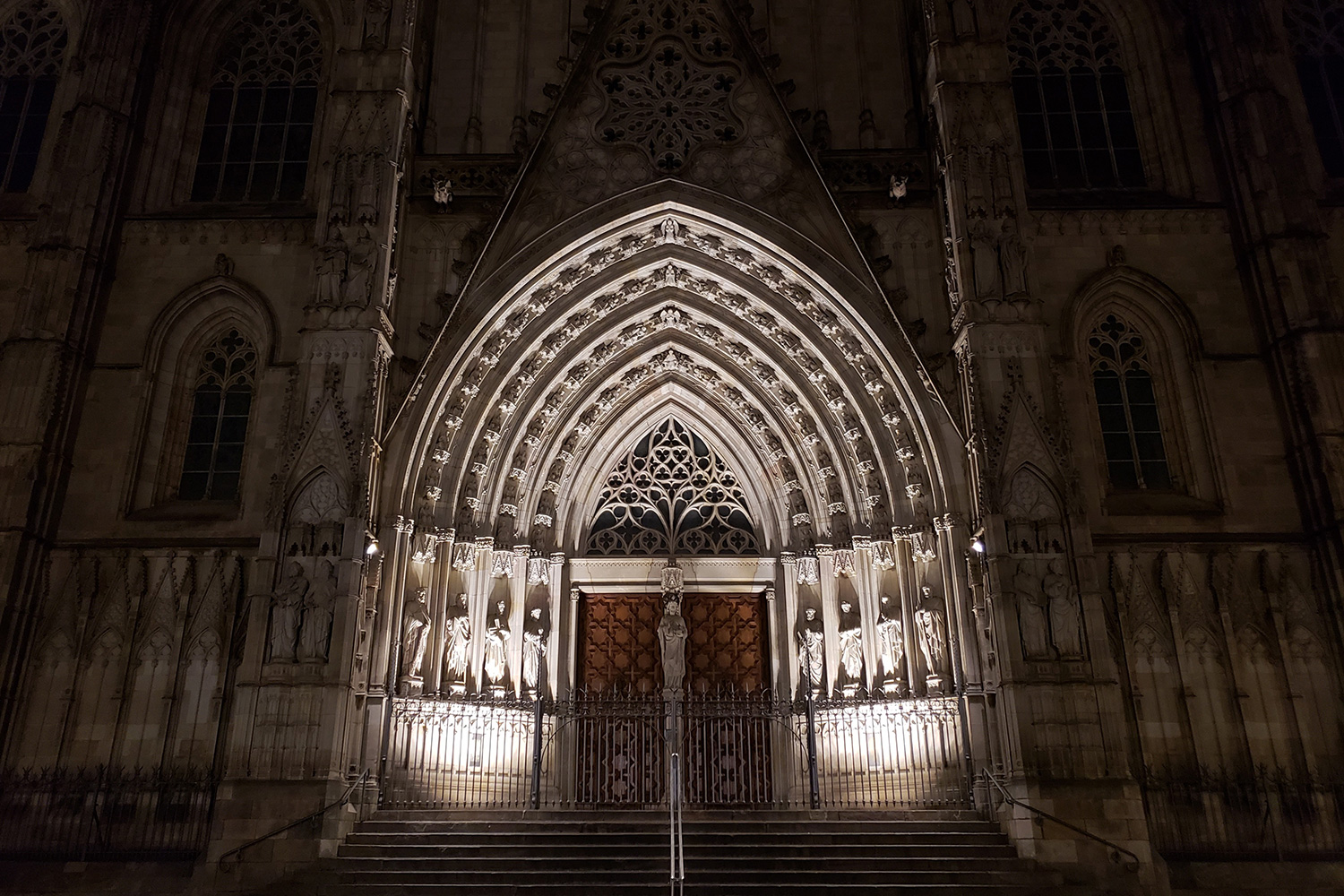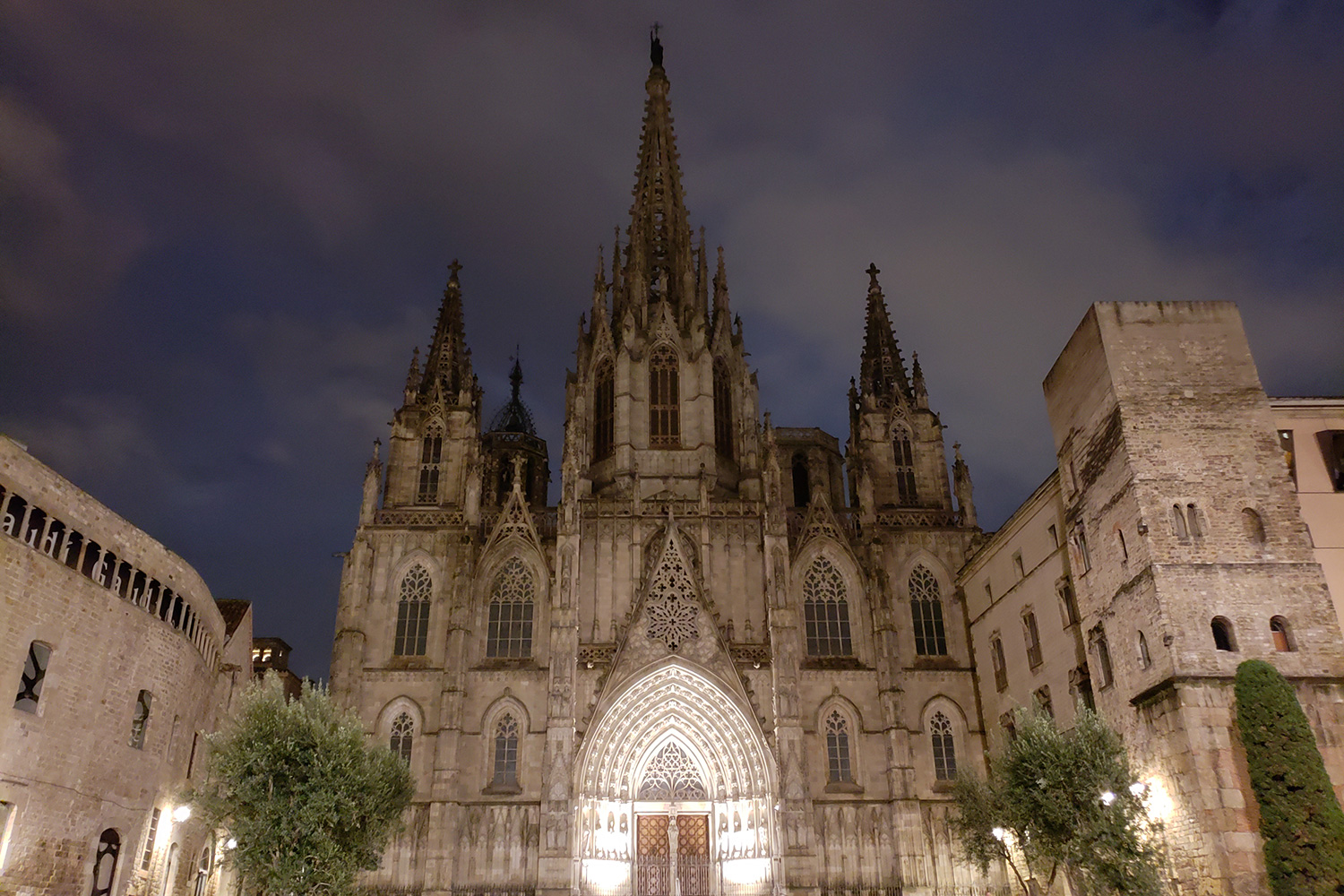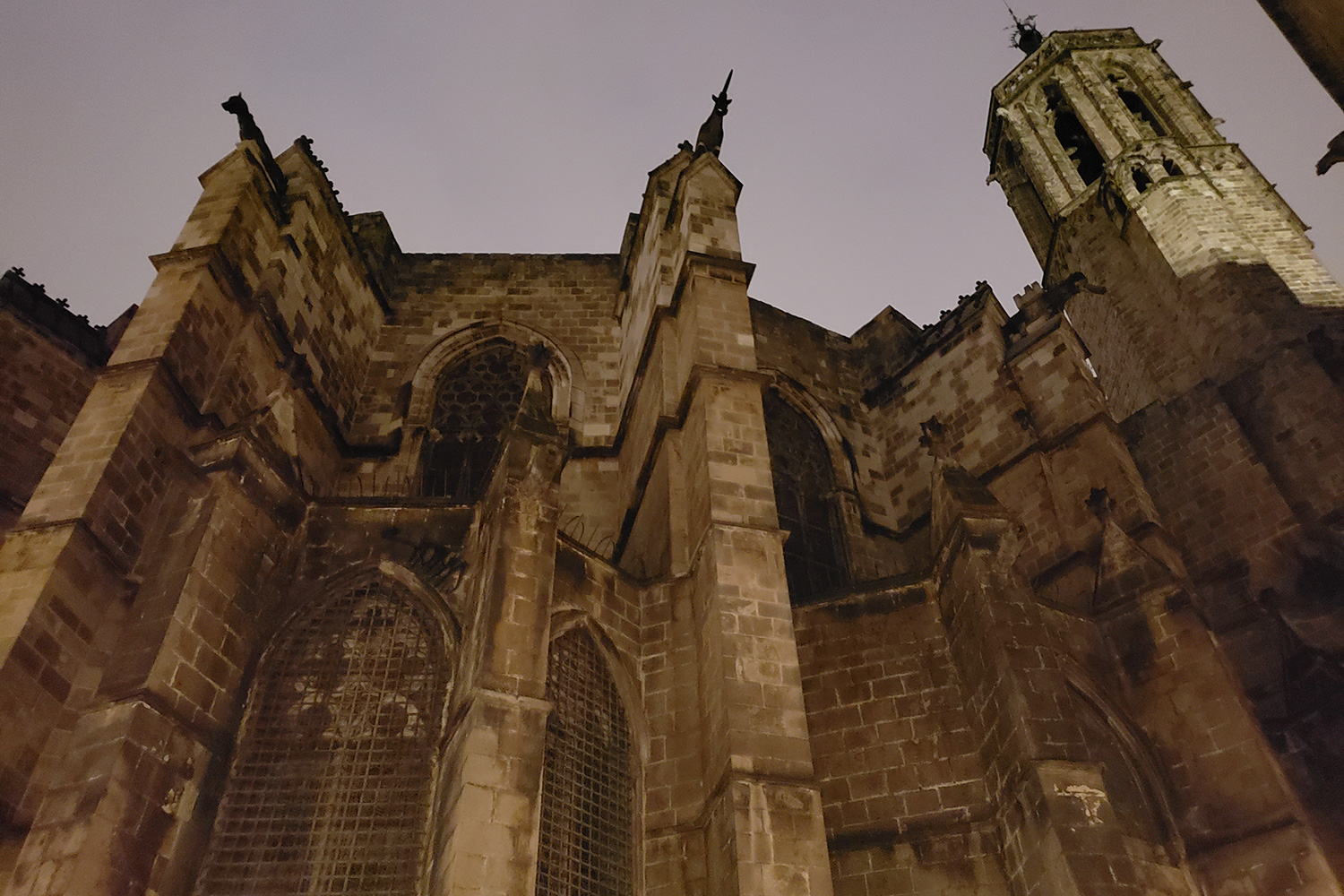The biggest addition to Samsung’s Galaxy S9 isn’t the dual camera system on the 6.2-inch Plus version — it’s the variable aperture available on the main camera of both smartphones. You can read our in-depth explanation about how it works, but it boils down to the camera being capable of mechanically switching between an f/1.5 aperture and an f/2.4 aperture.
A wide aperture (lower number) means the camera takes in more light, which is beneficial for low-light environments. The downside is photos aren’t as sharp, as they lose more detail. Samsung’s solution is to have the camera predominantly use the f/2.4 aperture, but when it’s much darker, the camera automatically switches to the f/1.5 aperture to absorb as much light as possible.
We spent an hour with the Galaxy S9 Plus at Mobile World Congress 2018 to show you how the camera works. Now we’re back with a more challenging test, after spending some time on the narrow streets of Barcelona’s Gothic Quarter at night.
If you want to see more camera comparisons, check out our smartphone camera shootout series. Comment below to let us know what camera shootouts you want to see next!
Low light
Indoor bar
This photo was taken in an eccentric underground bar, without much lighting. The camera automatically switched to the f/1.5 aperture, and we’re surprised at the amount of detail it was able to capture. Zoom into the bottles, and they all look incredibly sharp. The photograph also represents the colors at the bar very well, bringing out a muted red, while also not overexposing the displays on the barrels.
Food
We all love taking photos of food, and you’ll be happy to know the Galaxy S9 does a great job of capturing it even in dimly-lit restaurants. The photograph of this delicacy was taken in a charming restaurant called El Salon in the Gothic Quarter, and it certainly doesn’t have the best lighting conditions. The Galaxy S9 managed to capture a lot of detail, while maintaining the wonderful warm vibes at the restaurant. We also love the strong blur in the background, putting the focus on the stuffed chicken. You can tell the photo isn’t too sharp, with a some noise, but it’s not blurry or out of focus, and we’d easily share it (the photo, not the food).
Rain and trees
This is a challenging photo for any smartphone. We were outdoors, at night, in a poorly lit area. The Galaxy S9 manages all the same, maintaining the yellow hues from the street lights, while also capturing a fair amount of detail. What we like most about this photo is how it carries the mood of the night — the ground looks wet, with colors reflecting everywhere. You can even make out the “Centre” sign on the left, if you zoom in.
Palau Nacional
This photo shows how well Samsung’s multi-frame noise reduction works. This is a new improvement in the camera’s processing, as it’s able to greatly reduce the noise in the photo by taking a lot of photos and compiling them together. Look at the sky, and you’ll hardly see any noise; it looks natural. The lights aren’t overexposed, and you can still make out the Palau Nacional well enough in the distant back.
Las Arenas
There’s little noise seen here in the sky, and if you zoom into the underside of the circular walking platform at the top of the arena, you can still make out distinct circles. Details on the brickwork are a little fuzzy here, but perhaps that could have been eliminated if the Galaxy S9 was on a tripod. The colors in this photo are, once again, accurate to real life.
Barcelona Cathedral
These photos of the Barcelona Cathedral were the most challenging due to extremely dim lighting. All of them look rather fuzzy, and brightness isn’t well balanced. The archway on the front of the Cathedral looks good enough, but details aren’t strong, and we’d have liked to see it bring out more of the church surrounding the entrance. The photo of the front of the church is good given the circumstances, however. Detail is solid, and the sky is realistic, though the archway is a little overexposed.
Selfie
Selfies are an important part of the camera experience on any smartphone, and the Galaxy S9’s 8-megapixel camera doesn’t disappoint. The bar doesn’t look as well-lit as this photo makes it out to be, but more importantly, my colleagues are in focus. I’m a little out of focus, likely because I’m closer to the camera, and there’s noise everywhere, but the photo still manages to make it all look sharp.
2x optical zoom
Barcelona Cathedral
The second camera on the Galaxy S9 Plus offers a 2x optical zoom, meaning you don’t need to move from where you’re standing to get some photos up close. It’s a feature available on other smartphones, including Samsung’s Galaxy Note 8. We took this photo from the same place we took the previous Barcelona Cathedral photo of the front archway. You can see the f/1.5 aperture in full display here, as there’s plenty of detail, with no specific part overexposed or underexposed.
Las Arenas
Here’s another angle of the arena. This time, the photo is slightly more in focus. There’s more detail on the brickwork and the circles underneath the walking path at the top. The noise you’d typically see in the sky from other smartphones isn’t present here.
Live focus
Gelato indoors
Live Focus is Samsung’s take on Portrait Mode found on the iPhone and Google’s Pixel smartphones. It uses the telephoto lens to blur out the background of a subject, for a beautiful bokeh effect. Like optical zoom, this is only available on the S9 Plus. The blur effect looks great and is accurately applied around the subject, including the semi-transparent spoon. Close inspection reveals artifacts around the spoon, but that issue is hard to notice unless you zoom all the way in.
Pro tip
You may be surprised to learn that you can’t easily use Super Slow Motion anywhere other than broad daylight with the Galaxy S9. The video will look terrible. That’s because Super Slow Motion requires a lot of light, and anything indoors or at night will generally not cut it. The same is true on Sony’s Xperia phone.
Stay tuned for our full review of the Galaxy S9, where we pit its camera against top competitors like Google’s Pixel 2, and Apple’s iPhone X.
Editors' Recommendations
- Samsung has a new (and cheaper) way to buy the Galaxy S23
- Having Galaxy S24 Ultra camera issues? A fix may be coming soon
- 5 phones you should buy instead of the Samsung Galaxy S24
- A new version of the Samsung Galaxy S24 could be coming soon
- The Galaxy S24 just got a big camera update. Here’s what’s new















